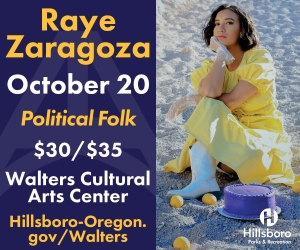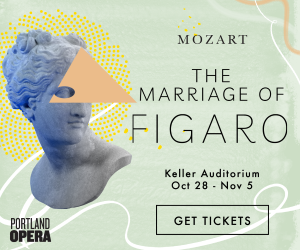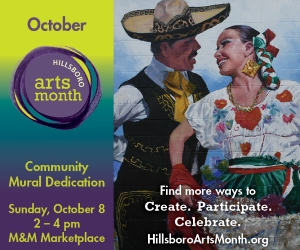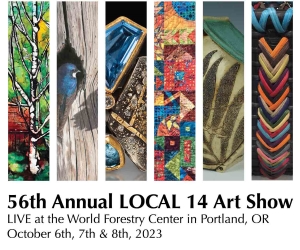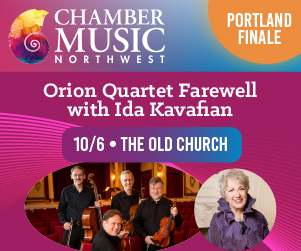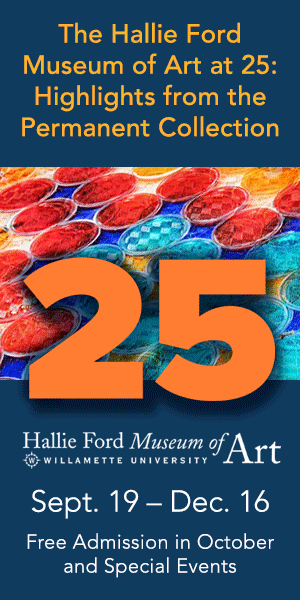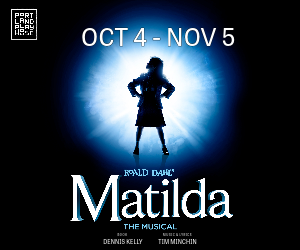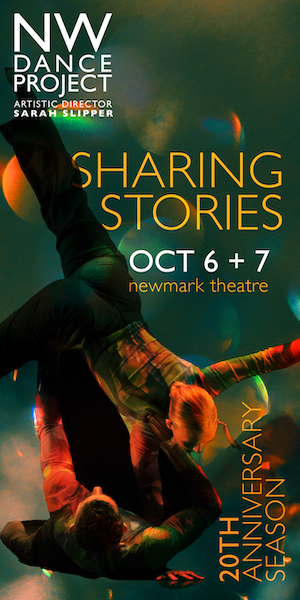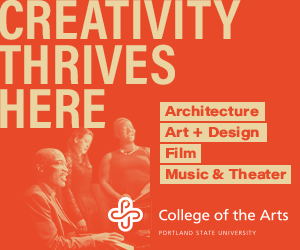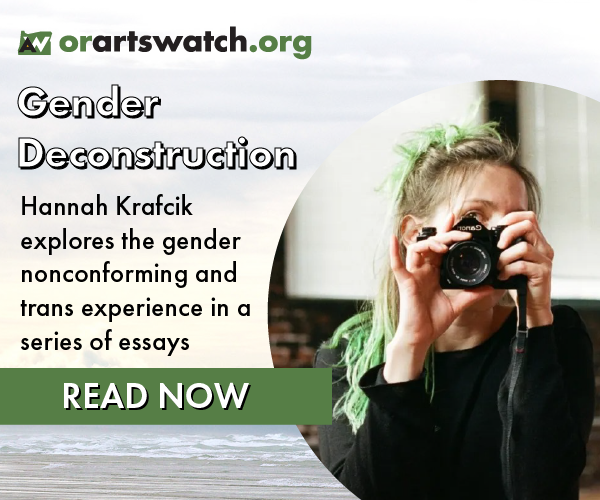This series, “Indigenous Resilience in Oregon,” focuses on different aspects of Oregon’s contemporary Tribal culture and explores how traditional ways of life have continued forward throughout colonization and settlement of Oregon. This collection of writings and interviews showcases the history and resiliency of Oregon’s First Peoples. The first installment of the series, “Steph Littlebird: ‘Am I honoring those who have come before me?’,” is here. This article focuses on the Museum at Warm Springs, an Indigenous institution helmed by Oregon’s 2016-2018 Poet Laureate Elizabeth Woody, an enrolled tribal member of the Confederated Tribes of Warm Springs.
***
The Museum at Warm Springs is a Tribal-owned facility located two hours southeast of Portland, and 15 minutes north of Madras, right off Highway 26. Originally constructed in 1993, it was designed as a conservatory for one of the largest collections of Native American artifacts in any museum. Now, just four years after the closure of the Tribe’s resort Kah-Nee-Ta, much of the tourism traffic that drove visitors to the museum has disappeared. The Museum’s Executive Director, Elizabeth Woody, is frank about the challenges facing the institution but has a clear and creative vision to keep the museum as a cultural hub and place for Native people to tell our own stories.

The Confederated Tribes of Warm Springs, Oregon is comprised of three distinct tribes, the Wascoes, Warm Springs and Paiute people. Each of these tribes speaks their own language and has lived in their own territories in Oregon for 15,000+ years. The Warm Springs bands lived on the Columbia River’s tributaries and spoke the Sahaptin language. The Wasco bands are the easternmost Chinookan-speaking Natives and they also lived along the Columbia, while the Paiutes lived on the high plains of southeastern Oregon and spoke a Shoshonean-based language..
During the 1800s, tribal life began to change as waves of European settlers arrived in search of land. According to the Oregon History Project:
From 1854 to 1855, Joel Palmer, the superintendent of Indian affairs for Oregon Territory, negotiated nine treaties between Pacific Northwest Indians and the U.S. government…In 1855, the Wasco and Warm Springs Indians ceded roughly ten million acres of land south of the Columbia River and between the Cascade and Blue Mountain ranges to the U.S. Government. The treaty also created the Warm Springs Reservation and reserved for the associated bands of the Wasco and Warm Springs Indians their right to hunt, fish, and gather food on traditional land outside reservation boundaries. The U.S. government moved members of northern Paiute band, in southeastern Oregon, to the Warm Springs reservation in 1880.
As was the story for many Indigenous tribes in Oregon, traditional ways of life changed greatly after they were removed from their traditional homelands to the reservation. The Warm Springs Reservation is located about an hour southeast of Mount Hood, in central Oregon’s high desert region. Salmon wasn’t as plentiful that far from the Columbia River region, and the climate was much harsher to survive in. The high desert land is arid and this factor contributes to poor soil conditions which made farming problematic. Indigenous cultures are land-based cultures, and this typically means they have an intimate relationship with the unique qualities of a specific landscape. Many tribes across this country were forced to relocate to lands they were not historically familiar with, and thus were forced to reconfigure their entire way of life to survive in unfamiliar landscapes.
INDIGENOUS RESILIENCE IN OREGON: An ArtsWatch Series
In 1937, the three tribes officially became the Confederated Tribes of the Warm Springs Reservation of Oregon, and in 1938, they formally accepted a corporate charter from the United States for their business endeavors, heralding a new era of self-determination and sovereignty for the tribes. In 1971, the Tribes began construction of the Kah-Nee-Ta Lodge and in 1974 began planning for the Museum at Warm Springs.
The Museum at Warm Springs officially opened to the public in 1993. It was constructed to Smithsonian standards, according to Woody: “It’s a conservatory,” she says. The standard is important, she adds, because the museum can “receive things that are going to be repatriated, because there are museums required by law to return artifacts back to their tribes, back to their origin.” This is similar to the motivations of the Grand Ronde Confederated Tribes’ Chachalu Museum and Cultural Center, which was built partly to house repatriated objects and features striking architectural elements that give the complex a unique presence on the landscape.
According to the museum’s website, “The exterior effects and building are arranged to resemble a traditional encampment among beautiful cottonwood trees…Materials used in the construction reflect the surroundings and traditions of the Tribes. Local stone, timber and brick are finely tuned to demonstrate the integration of the arts into everyday life.”
The Museum at Warm Springs is home to one of the most extensive artifact collections of any Native museum, in addition to a photographic archive containing approximately 5,000 photographs dating from the mid-19th century through the present. Along with a repository for the Tribe’s most precious cultural objects, the museum is a place where the community can connect with one another and their histories. As detailed in a previous article about the Chachalu Museum at the Grand Ronde Reservation, Indigenous-led museum spaces are an integral part of reclaiming Native histories and reimagining the way we tell our stories in these more formal spaces.

Recently, I had the pleasure of chatting with museum director Woody, an enrolled Tribal member of the Confederated Tribes of Warm Springs and a descendant of the Navajo, Wasco, and Yakama people. She is also Oregon’s 2016-2018 Poet Laureate, and the first person of Native descent to receive this honor.
As Woody explains, she was brought on “to help the museum think of a better model for itself. The museum was struggling financially and not for a lack of interest, but there was just a real need to improve the strategic vision, as well as looking at some other parts of the museum that needed to be refreshed.”
Prior to joining the museum, Woody attended the Institute for American Indian Arts in Santa Fe, New Mexico: “That’s when I first was introduced to the concepts around tribal museums; they had a museum studies program that was considered one of the best.”
Woody also worked for over a decade at the nonprofit organization Ecotrust in its Native programs. She also “developed the ECOS Indigenous leadership award, and worked 12 years as a studio manager and production manager for my auntie Lillian Pitt.” For readers who aren’t familiar with artist Lillian Pitt, she is considered one of the foremost Indigenous creators in the Pacific Northwest, and has been recognized extensively for decades of work with local communities and groups like the Confluence Project.
When Woody began working at the museum she became aware of the lack of representation for Indigenous people in museums more broadly. As she explains, during that time “the Eastern Oregon Regional Arts Council conducted a report on Pacific Northwest Columbia Plateau people. And that was one of the things we identified as a problem or an obstacle was lack of presence and a lack of people in real positions of power that we needed to have like professors and presidents of schools, colleges, and universities. We needed to have more Native Americans actually on staff, such as the Portland Art Museum, which has a phenomenal collection, but also things that are there that belong to other people and they needed to be handled with respect.”
More recently, non-Native museums and institutions have started to engage in conversations around repatriation and diversifying their staff with knowledgeable Indigenous people who can help guide their approach to community collaborations. As part of this initiative, the Museum at Warm Springs has developed a special relationship with the High Desert Museum, in Bend, Oregon. This institutional collaboration is discussed in my article on the High Desert Museum.
The Museum at Warm Springs has seen a dropoff in attendance during the pandemic, but attendance woes go beyond this. The permanent closure of the Ka-Nee-Tah Resort in September of 2018 eliminated a major source of attendees. The location of the museum is another issue, because it is not in a densely populated area. As Woody explains, “there’s barriers, because for one, we live in a very remote area. People’s incomes aren’t very high…Part of it is a lack of investment. Part of it is the lack of funding. Part of it is lacking the kind of input that we need. But, you know, it’s hard to do anything like this when our tribes here at Warm Springs are so impoverished, and not just the people, but the tribes are impoverished. We have very little revenue sources that are of value today to sell. We don’t have a tax base here, right. That alone is a big detriment. We don’t want to sell off our forest. We don’t want to pollute our rivers.”
In the past, the museum has offered classes to tribal members for free where “a lot of materials have gotten into their hands to make beautiful things, but we’re going to have to rethink our business model on that because we have only so much space and so much time in a year to actually teach things or to have these kinds of classes…That’s why a lot of the programs have been trickled down to very little because we don’t have a huge budget; programs and events have to be funded by sponsorships. So our partnerships with the High Desert Museum and the Confluence Project, for example, help bring in foundation dollars that probably wouldn’t have come to any one singularly, but because we’re working together, their funding is coming in.”
Museums working together not only broadens the experiences of the staff involved, it also benefits their programs directly. Collaboration opens up access to more grants and funding opportunities. Collective effort is the key to transforming these places into relevant institutions within their contemporary communities.
Even the museum’s current signage along the highway has depressed attendance, “So many times people miss seeing us until after they’ve gone by,” Woody explained. It is difficult to tackle even straightforward issues such as this when the budget is so constrained. Thankfully, just a week after my interview with Woody in early December 2021, Visit Central Oregon announced it was gifting the Museum at Warm Springs $25,000 for new signage on Highway 26. This new funding will make a huge impact on the museum’s local visibility and alert more travelers to its presence.

Woody’s vision for the future of the museum includes creating further opportunities for collaboration. “The museum is not a venture, but it could be something that was part of a venture. One thing the tribes are looking at is another economic development plan and the museum has to be part of that. And we have a five-year strategic plan positioning us to gain stability, to start looking at alternative business models for the museum and to also protect and preserve what’s here already.”
Ultimately, Woody understands that the unique qualities of Indigenous life are fascinating to people around the world. “We know that there’s things about our culture that can’t be translated. And we also know that all around the world, the majority of this world had once been Indigenous, meaning it was land-based culture. And it was spiritually imbued with wisdom, passed down through generations.” With Woody at the helm, the Museum at Warm Springs is poised to be a cultural center for Natives and the broader community alike.









